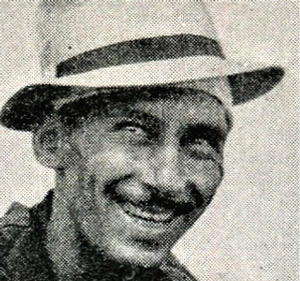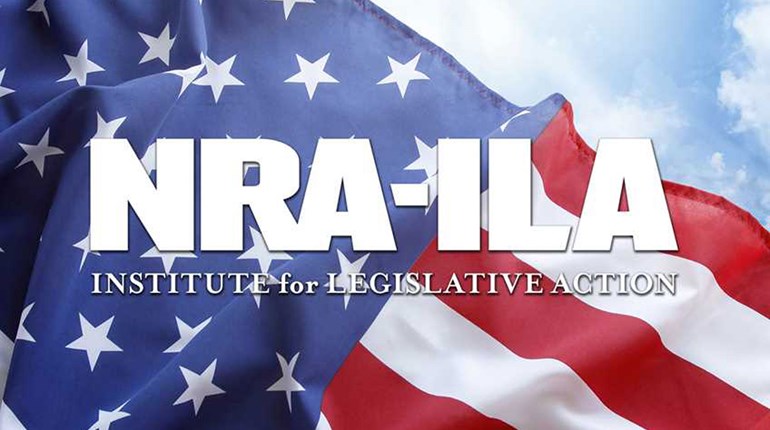
Read Part 1 and Part 2 of our look back at U.S. participation in the iconic RWS Challenge Trophy Match.
First RWS Perfect Score

The new target format certainly did not hurt the 1933 performance of Sam Bond, a noted purveyor of shooting equipment who became the first RWS competitor to go clean—a perfect 400x400. Bond’s clean score in the RWS was all the more impressive as it came upon the heels of his Dewar 400x400 which was shot earlier in the day.
Germans Break 3900
It seemed like it just might be Germany’s year in 1935, as the scores fired by Great Britain and U.S. dropped from previous years. Germany cracked the 3900 barrier by three points with six scores in the 390s, with Eric Hotopf’s 394 the top score for the match sponsors. Unfortunately, the improvement in Germany’s scores was not enough to overcome the loss of points by the other two teams.

Bisley was kind to the British team, as eight shooters exceeded 390, with a 391 for C. Sonley earning the laurels as Britain’s top gun for the 1935 RWS.
On the other side of the Atlantic, William Patriguin followed in Sam Bond’s footsteps and helped his team to a winning score of 3950 with a 400x400.
United States Wins Again
The 1936 RWS Match was a tour de force for the winning U.S. team. While there were no 400s this year, William Patriquin and Bill Schweitzer posted the top scores of 398. Following close on their heels were Marshall Grosskopf, Home Jacobs and Earl Mercier at 397. Two 394s were fired by Virgil Canfield and Bud Lippencott. Eric Johnson carded a 393, while W. Hunt and A.B. Salkeld rounded out the team with a pair of 392s. In all, the team totaled a 3952 as it won its fourth RWS match.
At Bisley, J. Hall and W.V. Knight tied for high with 395s. The British posted a respectable 3904 for second. Germany, having shot its best score the year before, dropped back below the 3900 mark for third place at 3884.
An Early Start Means Another Win

The U.S. turned out at 4:30 a.m. to shoot the 1937 RWS match. With such an early start, the team members either went to bed soon after dinner and were up really early, or simply arrived at the range after a night frolicking in Port Clinton’s tenderloin district. No matter which tack the shooters took, rest- or recreation-wise, the results were a record-setting and match-winning performance of 3963 led by Carl Frank’s 400.
Contrasting with the U.S. approach, the British slept in on match day, not starting until 6:30 a.m. The extra rest paid off, as the British Team shot a personal best of 3930 with T. Walker’s 398 at the top of the match bulletin.
Records continued to fall, as Germany posted a solid 3923—the best score the team had ever recorded in match history. Shooting in the late afternoon of Sept. 25, F. Melzer produced a 396 for Germany’s high individual score.

Huge RWS Tryout at Camp Perry
By the time team match day rolled around at Camp Perry in 1938, 400 candidates for the RWS Team had competed in the Preliminary RWS, won by Charles Hamby’s 400x400. Once the field had been winnowed down, the survivors had to negotiate two final elimination matches the day before the actual match. The team shot a 3953, which was 10 points below the record set the previous year. Dave Carlson shot a 399, leading the U.S. team to victory.
In England, the smallbore community found itself displaced. Saber rattling from the continent was marked by Germany’s annexation of Austria and its threats to take over the Sudetenland. The political situation in Europe was heating up, and the Bisley ranges were taken over for military use. The Addiscombe Rifle Club’s range in Croydon, just outside London, was pressed into service, but the weather was not cooperating and the team shot a 3913, which was 17 points under the 1937 score. L.R.A. Harvey was top British gun with a posted score of 396.
Germany again broke 3900, this year by a single point, but again found itself in third place. Jakob Richmann carded a 396 for the team’s high score.
Glass Ceiling Shattered in 1939
In 1939, the distaff side of the smallbore community wrote another footnote into shooting history. In its early days, few women participated in the sport. Mrs. Blanche Crossman became the first woman to earn a spot on a U.S. International Postal squad when she was named to the 1919 Dewar Team.
Mrs. E.A. Holcomb followed in the footsteps of Crossman when she became the first woman to earn a spot on the Railwaymen’s team in 1934. Her sixth-place score of 398 was three points ahead of her husband’s 395 for 11th place. Their appearance also marked the first time a husband and wife appeared together on an international postal team match bulletin as competitors.

The 1939 RWS saw Mrs. L.P. Bartlett shoot well enough in the trials to win a spot on the team. Her solid 397 elicited the SMRC Rifleman to comment in its annual report, “A woman, Mrs. L.P. Bartlett, turned in a steady score of 397, an achievement which some of our best marksman were unable to equal.”
They were quite right. Had she shot on the British Team her score would have tied her for second place in order of merit. It should have come as no surprise, as Bartlett had won her NRA Prone Regional to advance to the National Championship.
RWS Denouement
There would be both mystery and sadness surrounding the 1939 RWS Match. Soon after gobbling up Bohemia, Moravia and the Klaipėda region of Lithuania, Hitler ordered the German military to start planning for Fall Weiß, the invasion of Poland. By now, Germany was on a war footing, and conscription may have affected the ability of the country to field a team.
Confusion Reigns
One of the challenges in writing history is accounting for ambiguities in historical texts, and so it is with the confusion surrounding the RWS Match results during 1938-1941 era.

The uncertainty stems from the NRA adding an individual match, the Preliminary RWS Course, to the 1938 match program in addition to the similarly named RWS International Team Match. With two matches bearing nearly identical names, misunderstanding is easy to understand, particularly if a clerk, with little or no knowledge of shooting history is assigned to prepare the entry for the NRA Trophy Book.
Vere Hamer shot a 400x400 in the first Preliminary RWS Course Match in 1938. Merle Israelson won the match in 1939, while the 1940 top score of 400-37X was shot by Dave Carlson.
The NRA Trophy Book states that the Match Conditions for 1939 re-designate the trophy, “…for the American RWS Match for individual competition. Course of fire 40 shots at 50 meters, prone, metallic sights.” This is incorrect, as 1939 marked the final year for RWS team competition.
The Preliminary RWS Course under a new name, the American RWS Course Match, was a part of the 1940 Smallbore Championship schedule as an individual match under RWS conditions. The first match was won by E.R. Hughes with a 398x400.
The RWS International Team Match, Preliminary RWS Course and the American RWS Course Match would disappear from the championship program after 1941. By 1998, the RWS Trophy emerged from its long hiatus to be awarded to the NRA Intermediate Senior Outdoor 3-Position champion.
The Last RWS Match
As the sun was rising over Camp Perry on Sept. 3, 1939, it was 11:15 a.m. in London. Speaking from 10 Downing Street, British Prime Minister Neville Chamberlain announced:
“This morning the British ambassador in Berlin handed the German government a final note stating that unless we heard from them by 11 o'clock that they were prepared at once to withdraw their troops from Poland, a state of war would exist between us. I have to tell you now that no such undertaking has been received, and that consequently this country is at war with Germany.”
The U.S. RWS team, oblivious of the Declaration of War, set up its gear to shoot what would be the final RWS team match. The team went out in style, establishing the match record score of 3975, led by Dave Carlson’s 400x400.
Despondency
When the SMRC published the year’s postal match results in the October/November 1939 Rifleman, the six-inch article listed the U.S. and Great Britain’s team RWS scores, but ended with the laconic and melancholy comment, “Germany did not return targets.” A similar comment marked the end of the original Wakefield, “No information can be obtained from Sweden regarding scores or targets.”
Although few were aware of it at the time, 1939 would be a poignant year for the shooting community, as it would be the last time all the major international postals of the interwar years--the Dewar, RWS, Wakefield, FIDAC and Railwaymen’s were shot together.
The Dewar returned in 1946 and the revised Wakefield in 1991. The others disappeared into the mists of time, becoming just another shooting historical footnote, gone, never to return, only existing in old men’s memories or on the crumbling yellowing musty pages of antique shooting magazines.
The RWS Trophy’s Fate
Perhaps the NRA thought the RWS trophy was a war reparation, like the Nazi tall ship Horst Wessel, now the USCGC Eagle, used for the sail training of future U.S. Coast Guard officers. The trophy would remain in the custody of the NRA, ignored or forgotten for 40 years. It was redesignated in 1981 for presentation to the Men’s Air Pistol Champion at the NRA U.S. International Shooting Championship.
When the NRA ceded its status as the National Governing Body for the international shooting sports in the U.S. to USA Shooting, the trophy was withdrawn from competition in 1994. Four years later, it was once again pulled off the shelf to be presented to the NRA Outdoor Conventional 3-Position Intermediate Senior Champion.
Read more: Training With Ginny Thrasher: Using The SCATT MX-W2


































